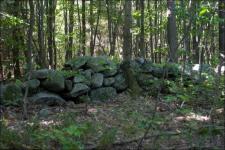Neanderthals appear to have created superior tools with less labour and less material required to create them which also produced better results when wielded. (It's easier & faster to cut some hides with Neanderthal toolkits than it is with those made by “our ancestors”.)
No, as far as we know it is the exact opposite. The Neanderthals appear to have had no interest in the fine arts whatsoever, judged by the fact that in the German cave systems where Neanderthals and “our ancestors” lived in close proximity you can pretty much identify which cave belonged to which group by the simple expedient of checking for the existence of artwork/musical instruments. If such artifacts are present then it is not a Neanderthal cave. Similarly rock paintings are not a Neanderthal past time either. (Despite the fact that the populations of Neanderthals during the occupation of those German caves would've been higher than that of “our ancestors” who were pretty much new to the area.)Of course, the real winner would be a population that adopted aspects of the Neanderthal's superior brain. Incorporated, say, a few percent of their genes into their own design. Interestingly, the great artistic revolution of modern man ocurred around the same time that the interbreeding with the Neanderthal occured. Could your innate desire to express yourself non-verbally, to convey ideas non-verbally, be your inner Neanderthal? Is not the caveman brute, but Picasso the true face of the Neanderthal?
Further these objects show marked similarity so it would seem that what is really going on is that “our ancestors” maintained much larger social networks (family ties, perhaps) and engaged in art and music as means to express ideas and/or reinforce such ties which presented a much more rapid spread of new ideas, news and technology among “our ancestors” than Neanderthals; so that the Neanderthals were effectively obsoleted (and as time wore on it meant inbreeding with attending health problems was probably a powerful factor too) rather than driven into extinction per se.









 Reply With Quote
Reply With Quote







 Silence is beautiful
Silence is beautiful




 But you gotta convince us.
But you gotta convince us. 

Bookmarks